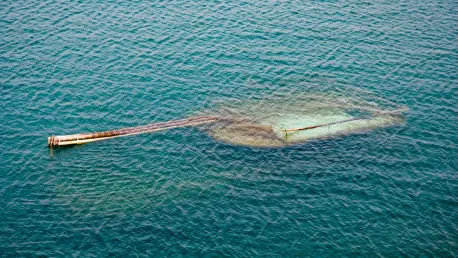As we dive into the complexities of offshore oil projects, I’m thrilled to sit down with Christopher Hailstone, a seasoned expert in energy management and utilities. With his deep knowledge of grid reliability, renewable energy, and electricity delivery, Christopher brings a unique perspective to the challenges and innovations in the oil sector. Today, we’re focusing on Sable Offshore’s ambitious Santa Ynez project off the California coast, exploring their strategic pivot to a floating storage solution, the financial hurdles they face, and the ongoing regulatory battles with state authorities. Our conversation touches on funding strategies, government negotiations, and the intricate balance of restarting operations in a historically sensitive region.
Can you walk us through Sable Offshore’s current approach to the Santa Ynez project, particularly their shift to a floating storage and treatment vessel strategy?
Certainly, Emilia. Sable Offshore has proposed a floating storage and treatment vessel as a workaround to market crude from the Santa Ynez field, largely due to ongoing disputes over restarting an onshore pipeline. This strategy allows them to store and process oil offshore, bypassing the immediate need for pipeline access while they address regulatory challenges. It’s a significant pivot from the original plan of transporting crude via the Las Flores pipeline to regional refineries, and it reflects their determination to keep the project moving forward despite setbacks.
What prompted Sable to move away from the onshore pipeline plan and adopt this offshore vessel strategy?
The primary driver has been the persistent regulatory roadblocks in California. The pipeline, shut since a 2015 oil spill, has faced intense scrutiny from state authorities. With disputes over repairs and compliance, Sable needed an alternative to avoid further delays in marketing their oil. The floating storage option offers a way to maintain production and revenue streams while they work through the legal and regulatory issues tied to the pipeline.
Turning to the financial side, there are reports that Sable needs around $1.7 billion for this floating storage strategy. Can you shed light on the breakdown of these costs?
Yes, based on available information, the $1.7 billion figure seems to encompass several components. Roughly $450 million is earmarked for acquiring or converting the offshore vessel itself, which includes necessary modifications for storage and treatment. Another $300 million or so is set aside for operational expenses, like general and administrative costs. The remainder ties into broader project needs, including refinancing a substantial $900 million loan originally taken to acquire the project. It’s a hefty sum, reflecting the complexity and scale of this alternative approach.
How does Sable plan to secure this significant funding, especially with talks underway with the U.S. government?
Sable has been engaging with federal authorities to explore financing options, which could include federal loan guarantees or other forms of support. These discussions are crucial as they could offset some of the financial burden and provide a stamp of confidence in the project’s viability. While the specifics and timeline of these talks aren’t fully public, securing government backing would be a game-changer in managing the high costs and risks associated with the floating storage strategy.
Let’s discuss the regulatory challenges. What’s the latest on Sable’s dispute with California over the pipeline restart?
The situation remains contentious. Recently, a California judge tentatively ruled against lifting a cease and desist order on repairs to the Las Flores pipeline, which was a setback for Sable. Additionally, the California Office of State Fire Marshal has stated that Sable hasn’t met the conditions for restarting the pipeline, citing incomplete repairs under prior waivers. Sable disputes these findings, arguing they’ve complied and that there’s a misunderstanding. They’ve committed to appealing the court ruling and resolving issues with the Fire Marshal, but it’s clear this battle is far from over.
How have these regulatory hurdles impacted Sable’s broader plans for the Santa Ynez project?
These challenges have significantly slowed down the timeline for full operational restart via the pipeline. While Sable did resume production from one platform in May, the inability to use the pipeline means they’re leaning heavily on the floating storage strategy as a stopgap. The regulatory pushback also adds uncertainty, affecting investor confidence and potentially complicating funding efforts. It’s a tough spot, as they’re balancing production goals with legal and compliance demands.
Looking at the history of Santa Ynez, shut down since the 2015 spill, what have been the biggest obstacles in getting operations back on track?
The 2015 spill left a lasting mark, both environmentally and reputationally, creating a high bar for regulatory approval. Sable has faced intense scrutiny over safety and compliance, especially with the pipeline repairs. Beyond that, the technical challenges of restarting a long-idle project, coupled with community and environmental opposition, have made every step contentious. It’s not just about fixing infrastructure; it’s about rebuilding trust and navigating a complex web of state oversight.
What is your forecast for the future of projects like Santa Ynez, given the regulatory and financial landscapes in the offshore oil sector?
I think projects like Santa Ynez will continue to face a tough road ahead. Regulatory environments, especially in states like California with strong environmental priorities, are likely to remain stringent, pushing companies toward innovative but costly alternatives like floating storage. Financially, the high capital requirements and risk profiles mean that government support or creative financing will be critical. My forecast is cautious optimism—operators who can adapt to these constraints and build strong stakeholder relationships have a chance to succeed, but it won’t be easy or quick.









